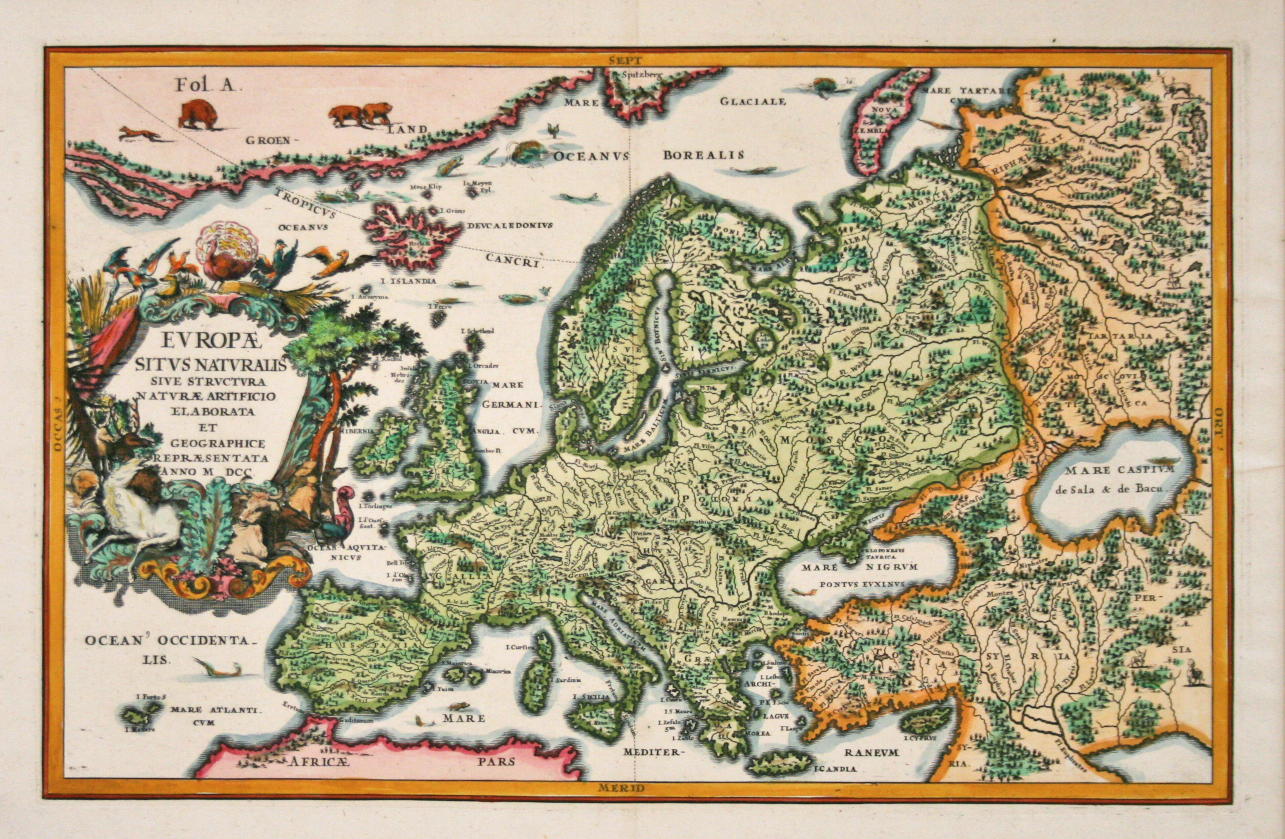Heinrich Scherer (1628-1704) was a Professor of Hebrew, Mathematics and Ethics at the University of Dillingen until about 1680. After that, he obtained important positions as an Official Tutor to the Royal Princes of Mantua and Bavaria. During his time in Munich as a Tutor to the Princely House of Bavaria, his lifetime’s work as a cartographer received acclaim and recognition. Scherer’s world atlas, the Atlas Novus, consisting of seven volumes, was first published in Munich between 1702 and 1710. It was reissued in a second edition between 1730 and 1737, and forms a singularly unusual, almost revolutionary work in terms of the development of European mapmaking at the beginning of the 18th century.
What makes Scherer’s maps unusual is their highly decorative Catholic iconography and imagery and the revolutionary thematic nature of many of the maps. Scherer himself was a Jesuit and many of the maps draw heavily from the history and development of the Jesuit order since its establishment by St. Ignatius Loyala in the early 16th century when it was the driving force behind the European Catholic Counter Reformation.


